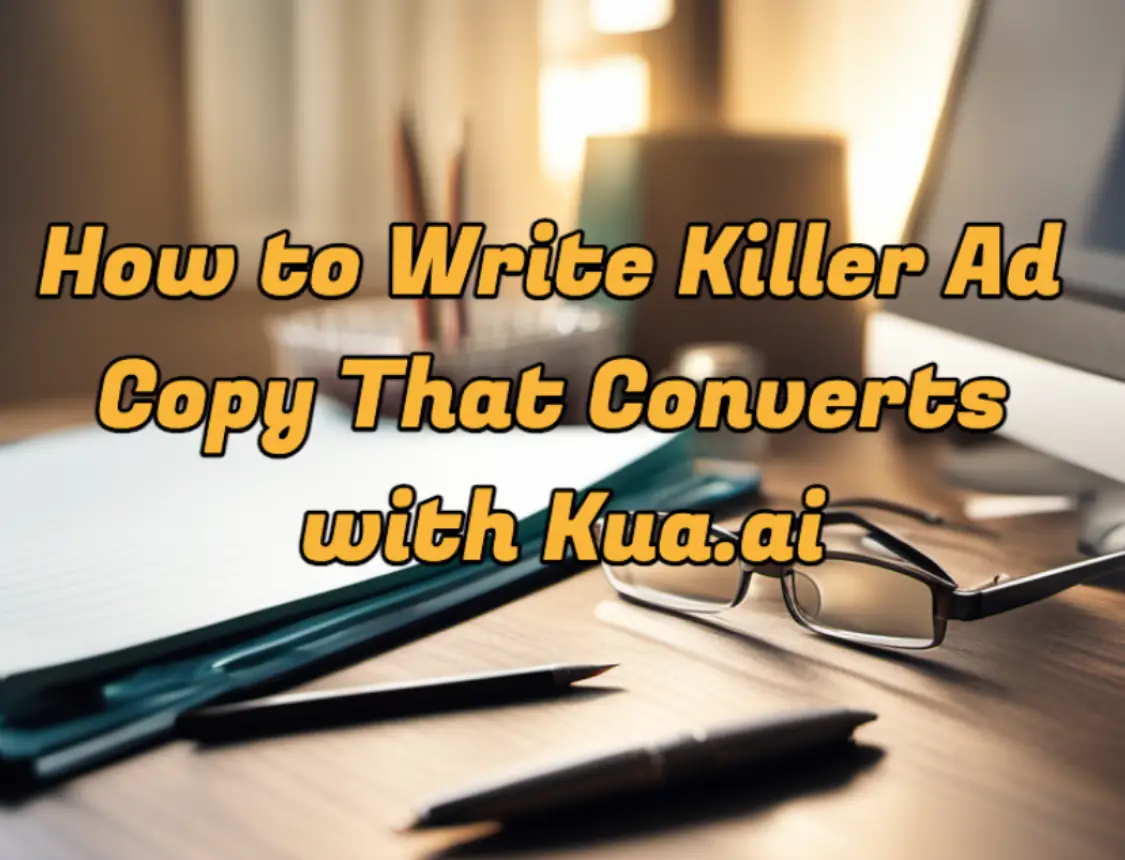How to Write Killer Ad Copy That Converts with Kua.ai

In the fast-paced world of digital marketing, writing ad copy that converts is an essential skill. This blog post will guide you through the process, offering actionable tips on creating compelling, conversion-focused ad copy.
Tips On How To Write Ad Copy That Converts
Understanding Your Audience and Setting Conversion Goals
Building robust audience personas is a crucial first step in writing high-converting ad copy. These personas, representative of your key audience segments, help you better understand your customers' motivations and needs. This understanding allows you to create ads that effectively resonate with your audience and motivate them to take action.
Addressing Pain Points and Highlighting Benefits
With in-depth knowledge of your target audience, you can craft ad copy that addresses their specific pain points and highlights the benefits of your solution. By connecting with your audience through empathy, you can engage prospects who are more likely to respond to your ads. Moreover, a strong call to action (CTA) can further encourage users to take the desired action.
Leveraging Psychological Triggers
Emotions are powerful motivators for action. Fear of missing out (FOMO), for instance, can be a potent trigger. Highlight elements such as scarcity or time-sensitive offers in your ad copy to leverage this feeling.
Using Relevant Examples and Metaphors
Examples and metaphors that resonate with your audience can help your ad stand out. Use the insights gained from your audience research to create relatable examples and metaphors. Your audience's connection with your business on an emotional level can foster trust and loyalty, building a dedicated customer base that's hard to replicate.
Telling a Compelling Story
Storytelling is an effective way to engage deeply with your audience. A meaningful story can address pain points, offer solutions, validate them with social proof, and address barriers that might stop them from converting.
Testing and Iterating
Testing is crucial for the success of any campaign. Regularly refresh your ad copy to keep it relevant and increase your chances of converting.
Ad copy generator tools, such as Kua.ai, use artificial intelligence to quickly generate several versions of ad copy based on your inputs. These tools can significantly speed up the testing process and help you find the most effective copy.
Maximizing the Impact of Your Ad Copy with Kua.ai
In the world of marketing, even the tiniest change in ad copy can spell a huge difference in outcomes. Ever wondered why? Well, it's because testing ad copy helps you figure out what resonates best with your audience. However, this process can be time-consuming, and that's where an ad copy generator tool like Kua.ai comes in handy.
Harnessing The Power of AI with Ad Copy Generators
Ad copy generator tools, such as Kua.ai, harness the power of artificial intelligence and computerized language processing to instantly conjure multiple versions of ad copy. All you need to do is feed in your requirements - keywords, tone, audience, message, and more. These tools are designed to maximize clicks and conversions, drawing on the real-world performance data of thousands of ad copies, and optimizing the copy in accordance with that data.
Audience Segmentation and AIDA Framework
To get the best out of your ad copy, you need to thoroughly segment your target audience and frame it within the Attention, Interest, Desire, Action (AIDA) framework. This involves mapping and planning your campaigns and ad sets to target different users with highly relevant ads that captivate their attention, generate genuine interest, turn that into desire, and ultimately drive them to action. When you strike the right balance between audience size and the platform’s ability to gather enough data to optimize, you can create more relevant and compelling ad copy.
Highlighting Your Unique Selling Proposition
Remember, your ad copies are a direct reflection of your brand’s Unique Selling Proposition (USP). It's essential that your USP stands clear to the reader, distinguishing you and your product/service from the rest. Depending on your target audience, your highlighted selling point in the ad copy may vary. Kua.ai enables Selling Point Extraction, letting you extract selling points from original product descriptions based on different audience positioning.

Tips:
- Use the infobase to access product details.
- Include detailed audience targeting in your input (e.g. "who have knowledge about CNC machine but don't know Carvera product") to get more targeted selling points.
Use Kua.ai to Write Ad Copy
A minuscule change can have a massive impact on ad performance; what's crucial is to conduct numerous tests to find the most suitable one. Kua.ai offers a variety of ad copy styles for your testing purposes.
You can use Benefits Ad Copies Generation to create ad copies that emphasize product features and deadlines. Highly applicable when your audience has no knowledge of your brand. Provide a focused and comprehensive description of the basic features of the product to generate interest at the awareness stage.

Resonating Ad Copies Generation can be used to create ad copies using metaphors, similes, and analogies techniques. When the audience already has a certain understanding of the product, use metaphors, similes, and analogies to establish an emotional connection, allowing the audience to vividly feel the advantages of the product.

Customer Testimonials Ad Copies Generation can be used to create ad copies with testimonials.
A happy customer review is often one of the most persuasive forms of advertising.

Tips:
- Your input should include detailed target audience information and selling points to get better output results.
- Multiple copies are provided at once for selection and testing.











